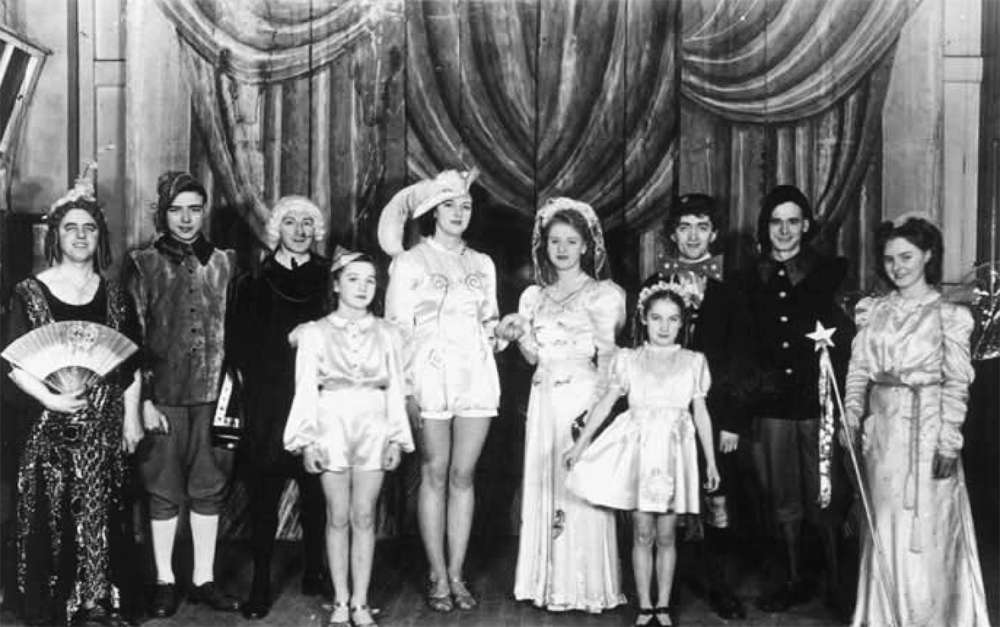
Susan Essex and Jill Morris from Tameside Local Studies and Archive Centre take a fascinating look back at the history of panto in our area...
How did it all begin?
Pantomime, so beloved by children of all ages, had its origins in the 16th century Italian Commedia dell’arte – a type of street theatre involving songs, dance and slapstick comedy.
This kind of entertainment found its way to London and in the 18th century pantomimes performed in the theatre began to evolve using classical stories set to music but without dialogue.
In 1843, Parliament passed the Theatres Act. This piece of legislation removed censorship by the Lord Chamberlain of all but the most risqué of theatre performances, thereby allowing a much greater freedom of expression.
All the extras that we associate with pantomimes today could now be added, producing works characterised by wit and wordplay.
These complemented the growing popularity of the fairy tale as the focal point of the performance. Public taste for stories, such as Mother Goose, was replaced with growing interest in tales such as Aladdin and Sinbad, drawn from the newly-translated Arabian Nights. The pantomime had been reinvigorated, as can be seen from performances staged during this period in the North West region.
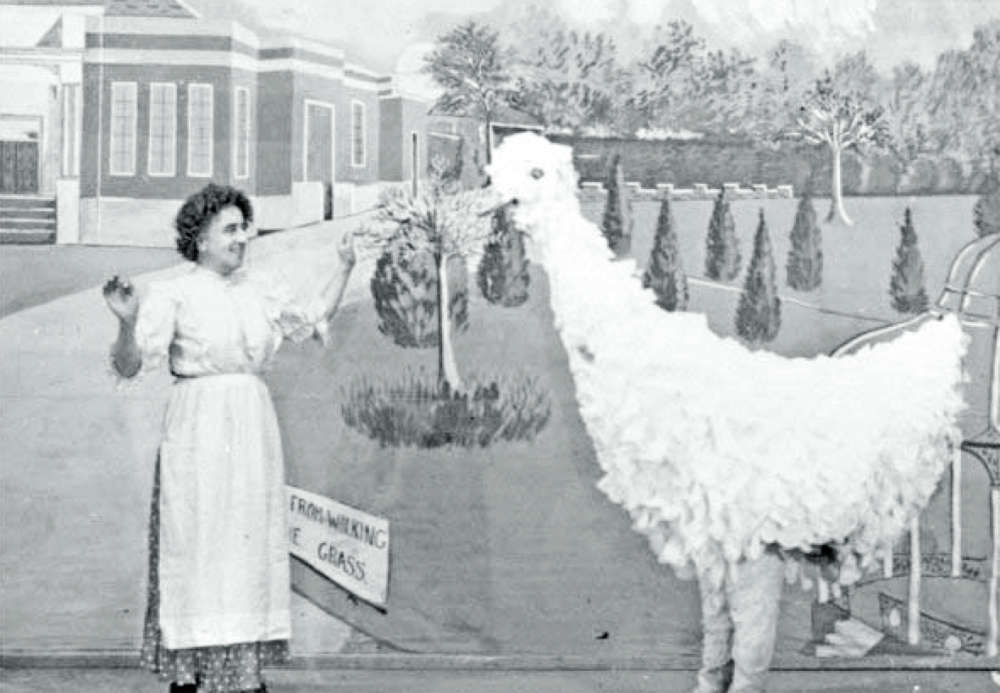
St Thomas’s Church, cast members in the pantomime 'Mother Goose'
Greasepaint and the Spotlight!
Most modern pantomimes follow a successful formula taking a well-known story such as Aladdin or Sleeping Beauty and moulding it to the pantomime model.
This includes a Principal Boy (usually a woman dressed as a man), the love interest, a Principal Girl, a villain, a Good Fairy, a Pantomime Dame (a man dressed as a woman), sometimes a pantomime animal, plenty of slapstick comedy, and a singalong with the audience participating. Certain rituals are always enacted, such as booing and hissing at the villain by the audience.
The musical score usually encompasses some popular songs sung by the characters in the story. A must are the double entendres intended for the adult audience.
The festive period has long been associated with these comic performances.
From the beginning of the 19th century, people throughout society began to mark the yuletide period with a trip to the theatre. Pantomimes began to open on Boxing Day, and it was not long before such shows were considered to be a staple of the season.
Soon Christmas wasn’t Christmas without a pantomime!

Theatre Royal, Hyde. One of Hyde’s entertainment centres. Officially opened on 3 November 1902.
The Christmas Pantomime in Ashton-under-Lyne: 'A Most Laughable Affair'
In the 1850s the tradition of the Christmas pantomime was alive and well in Ashton-under-Lyne.
Round trips were organised into Manchester so as to take advantage of the latter’s theatres staging their performances for the season.
Omnibuses arranged by private companies would convey Ashton residents from a pick-up point to arrive in time for the pantomime, before returning attendees to their homes often via a public house. One advert announces one such expedition, leaving from the Old Square and Commercial Hotel every Monday, Wednesday and Saturday evening at 5.15pm and heading back to Ashton via ‘Mrs Whitehead’s, Guidebridge.’ Return fares were around one shilling per person.
Other forms of transport were also made available for theatre-goers from the Tameside area.
Trains were regularly laid on after 11pm from Manchester to Ashton, as performances were timed so as to ensure that attendees were able to catch the late services.
For those further afield, railway companies would arrange half-day excursions between cities such as Liverpool and Leeds and Manchester. These trips were made attractive by means of the issue of cheap tickets on fixed trains.
Pantomimes were also put on in Ashton itself, targeting those unable to afford these Christmas outings. These were most commonly presented inside public houses at the behest of their proprietors, who would engage locals with a theatrical bent in the planning, acting and directing of the performance.
Audience-members would pay a nominal sum for the privilege, usually no more than a few pennies. These more informal plays were advertised in local newspapers and shop windows throughout the town. A policeman would be in attendance ‘to preserve order.’
Local Theatres: 'An Ornament to the Town'
The 19th century bore witness to a rapid expansion in theatre building, particularly with regard to the regions outside London.
Increasing urbanisation and a thriving economy inspired many provincial towns and cities to construct their own – often ostentatious – playhouses.
Whilst touring companies brought their productions to these venues, high demand for the Christmas pantomime meant that such shows could be produced in-house, offering a spectacle tailored to local residents.
For theatre-owners and directors, the pantomime played a key role in the calendar, its guaranteed success underwriting losses accumulated during the year.
‘… great preparations are being made in the cotton metropolis, especially at the theatres, whose pantomimes are spoken of as being equal to, if not exceeding, those of previous years.’ - ASHTON WEEKLY REPORTER (29TH DECEMBER, 1860)
In Ashton-under-Lyne the community was long served by the Theatre Royal, itself the site of regular pantomime performances.
In 1857, for example, the public were treated to one such show entitled ‘the Fairy of the Coral Grotto.’ In 1891, however, this venue was replaced by a new Theatre Royal, redesigned and rebuilt in a grand style on Oldham Road. William Revill, who, together with his family, was the well-known owner of a group of theatres in the North-West, oversaw the project and continued to act as proprietor following its opening.
Elsewhere in the town the pantomime lived on at the People’s New Concert Hall on Stamford Street.
Opened in 1863, the theatre was converted from the former Oddfellows Hall. Here the Christmas season was traditionally celebrated through a ‘Grand Comic Burlesque Pantomime.’
Later the building became known as Booth’s Theatre and the People’s Opera House, before closing in 1950. Circuses would also regularly erect pop-up shows on the Market Place for December and January with impressive spectacles including a comic pantomime, such as the 1867 display put on by Newsome’s Grand Circus entitled, ‘The O’Donoghue, or the White Horse of the Lakes of Killarney,’ its content betraying the Irish origins of many of the performers.
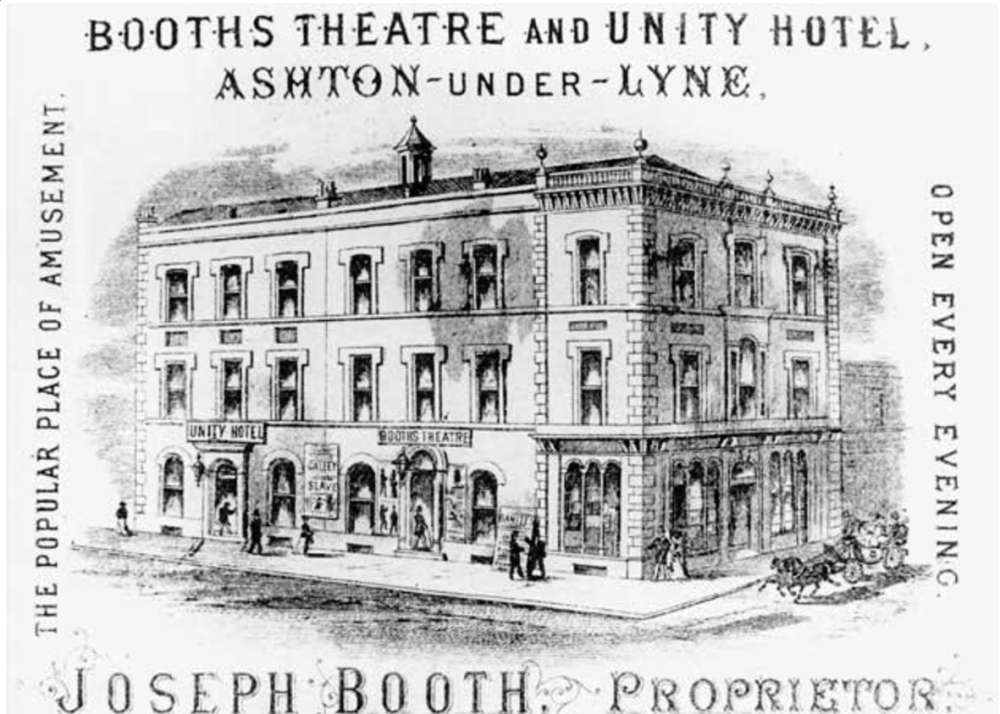
Advert for Booths Theatre and Unity Hotel, Ashton-under-Lyne. ‘The Popular Place of Amusement. Open Every Evening. Joseph Booth, proprietor.
There were many opportunities for those so inclined to participate in the tradition of the Christmas pantomime in other parts of the borough.
The Grand Theatre in Stalybridge, the Theatre Royal and the Hippodrome and Opera House in Hyde, the Tameside Hippodrome and others staged such shows on a regular basis well into the 20th century with casts including plenty of famous faces. Yuletide productions were also presented at lesser-known venues such as the People’s Hall in Stalybridge, which oversaw the ‘notable event’ of a pantomime entitled ‘Dame Trot and Her Wonderful Cat’ in 1870.
Dramatic societies would also stage and direct regular Christmas shows. Ashton Repertory Club spent many years in the Tameside area putting on a Christmas pantomime before their final performance in 1970, presenting ‘Toad of Toad Hall’ at Ashton Town Hall.
In addition, many Sunday schools and church groups would themselves include a Christmas show in the calendar. Indeed, Dukinfield Unitarian Church still has a pantomime society that performs in February.
Whilst a yuletide season packed with pantomime performances in Tameside may now be a thing of the past, Hyde Festival and Guide Bridge theatres still present shows at Christmas for the modern theatre-goer, keeping that festive spirit alive!
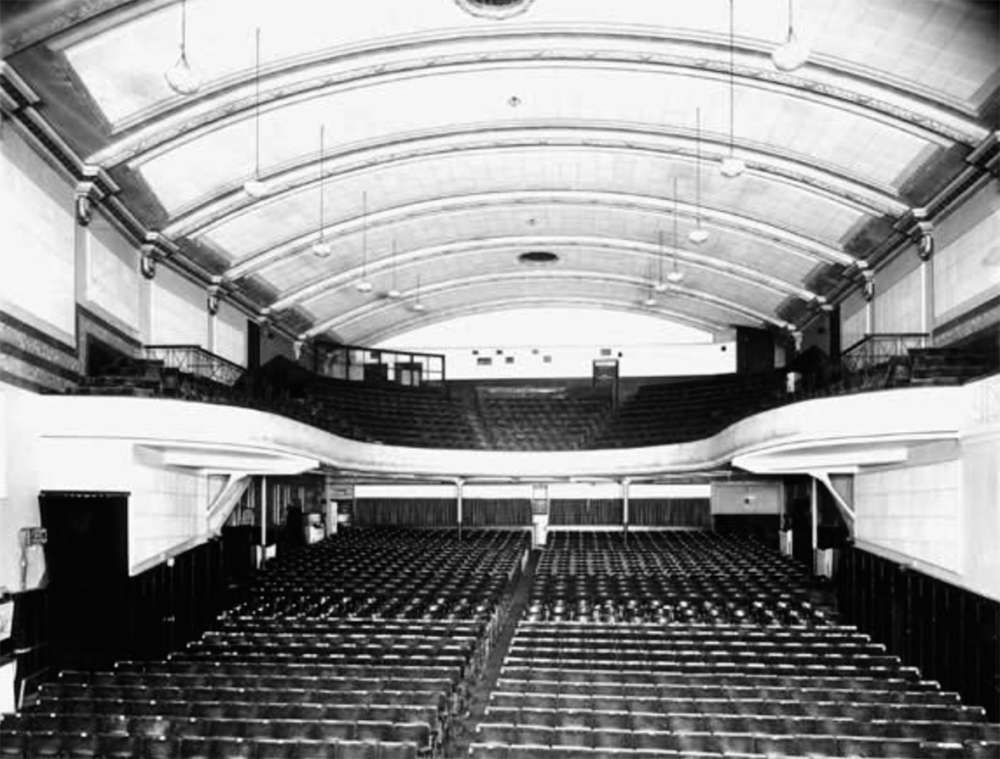
Hippodrome, Hyde. Interior of the auditorium, taken from the stage.
An Ashton Pantomime: 'Jolly King Cotton'
The Spread Eagle Inn – situated on Stamford Street West – was a popular venue for these performances, providing space inside its Victoria Concert Rooms.
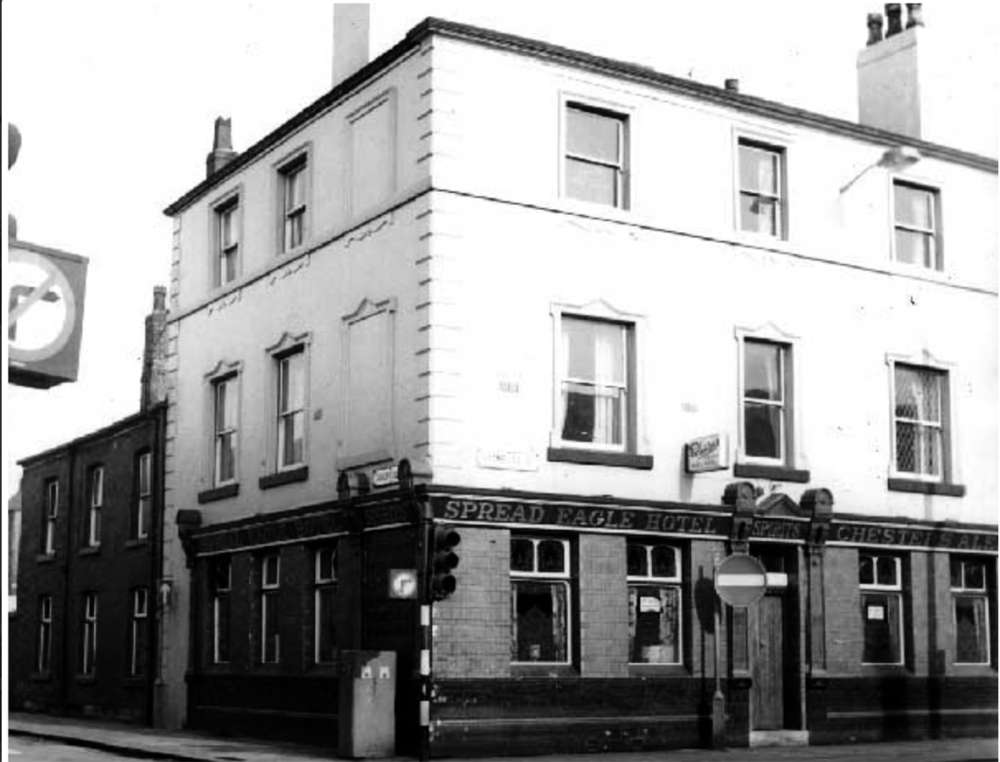
The Spread Eagle Hotel (public house), on the corner of Stamford Street and Cavendish Street. The pub was demolished in the late 1990s and is now the site of a supermarket
In December 1856, John Grundy, the inn-keeper of the establishment, announced the debut of a ‘fresh novelty for Christmas,’ proclaiming his determination to ‘provide cheap and rational amusement for the public of Ashton and its vicinity.’
Every evening at 9pm the Spread Eagle was to play host to ‘a Grand Christmas Pantomime,’ a play deemed ‘of singular construction and plurality of effects.’
Betraying the local flavour of these events was the title of this magnum opus: ‘Jolly King Cotton, Or, Joe, The Ashton Weaver; Pretty Jane of Stalybridge; and the Sparkling Fairy of the Golden Loom.’ The advertisement enthusiastically sets out the cast and characters (including Jolly King Cotton himself, Old Grindem, Joe, the Ashton Weaver and ‘Pretty’ Jane), whilst furnishing a brief survey of the plot and various acts.
Ashton itself forms the backdrop for one scene, playing out along Warrington Street, near the marketplace.
Distinguished by their easy accessibility and parochial subject matter, these informal pantomimes remained in high demand throughout the 19th century, offering the opportunity to experience the excitement and thrill of the stage to those from all echelons of society.
‘THE PANTOMIME AT THE SPREAD EAGLE - We are informed that the Christmas pantomime produced at this place of amusement has become exceedingly popular; it is certainly a most laughable affair, and will for some time attract good audiences.’ - ASHTON WEEKLY REPORTER (10TH JANUARY, 1857)
You can find out more about Tameside’s past plus find out the latest about the Tameside Smile Project - the digitisation of thousands of the Reporter’s photographic files - at https://tamesidesop.wordpress.com/author/tamesidesop/


 One injured after gas explosion in Dukinfield
One injured after gas explosion in Dukinfield
 WATCH: Shocking hit and run outside Ashton polling station
WATCH: Shocking hit and run outside Ashton polling station
 ELECTION: Indy candidate who clinched long-held Labour seat says he will 'shake up the status quo'
ELECTION: Indy candidate who clinched long-held Labour seat says he will 'shake up the status quo'
 ELECTION: The list of winners and losers
ELECTION: The list of winners and losers


